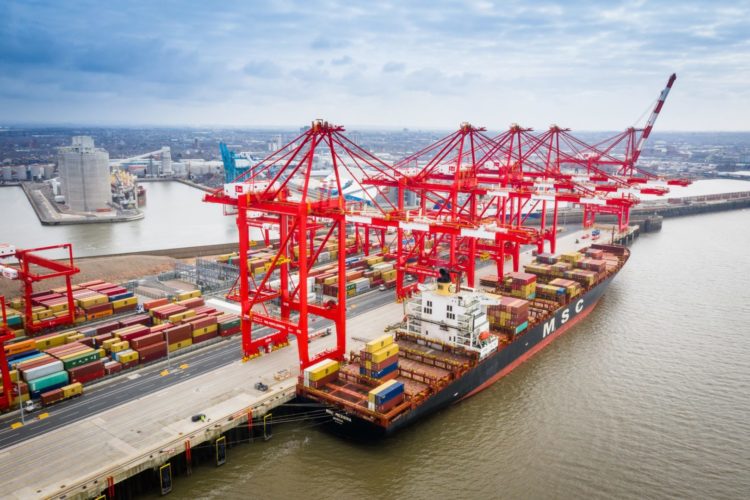Liverpool2 handles record-breaking number of containers
MSC Federica docked and offloaded 5,452 TEUs (containers), the highest number seen from a single vessel in at the Port of Liverpool since the Liverpool2 terminal opened in 2016. Tony McDonough reports

Peel Ports’ £400m Liverpool2 container terminal has this week broken its record for the number of containers handled from a single vessel.
The Port of Liverpool is currently working around the clock to make sure the UK is supplied with food and medicines during the coronavirus lockdown. And this week MSC Federica docked and offloaded 5,452 TEUs (containers), the highest number seen from a single vessel in Liverpool since the terminal opened in 2016.
The vessel is part of MSC’s Turkey Canada service which includes calls at Montreal, Liverpool, Sines, Valencia, Barcelona and Tekirdağ amongst other terminals. This service directly links Liverpool to the Far East.
With giant cranes as tall as the Liver Building, Liverpool2 catapulted the port back into the global shipping top tier. The deep-water facility if capable of handling 95% of the world’s biggest container vessels.
David Huck, managing director at Peel Ports, said: “This record is a testament to the investment we’ve put in to ensure state-of-the-art technology, including our five ship to shore cranes (STS) and 12 cantilever rail mounted gantry cranes (CRMG) to help make our world-class staff as efficient as possible.
“At difficult times like these, businesses want to know that their supply chains are able to cope with the increased demand and this demonstrates that the Port of Liverpool is ready to meet their needs.”
Peel Ports, in conjunction with global terminal business Terminal Investment Limited Sarl (TiL), is continuing to develop the deep-water terminal. The next phase of growth has seen the arrival of a further three STS cranes which are being commissioned.
And the port will soon see a further 10 CRMG cranes which will increase the capacity of the terminal significantly, making it capable of managing the unloading of two 380m vessels simultaneously. Work on this second phase of the project has already started and is expected to be completed during 2021.

